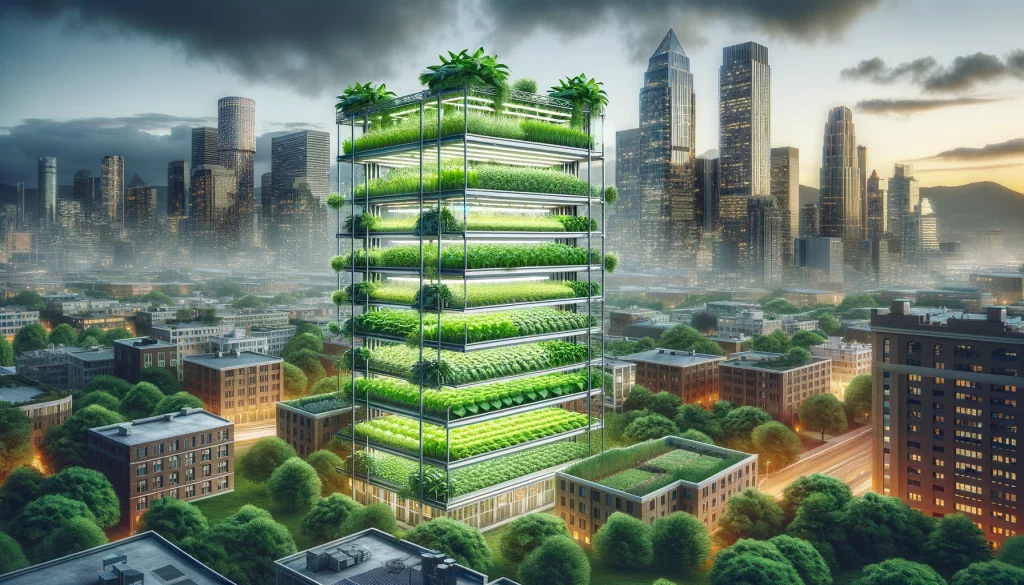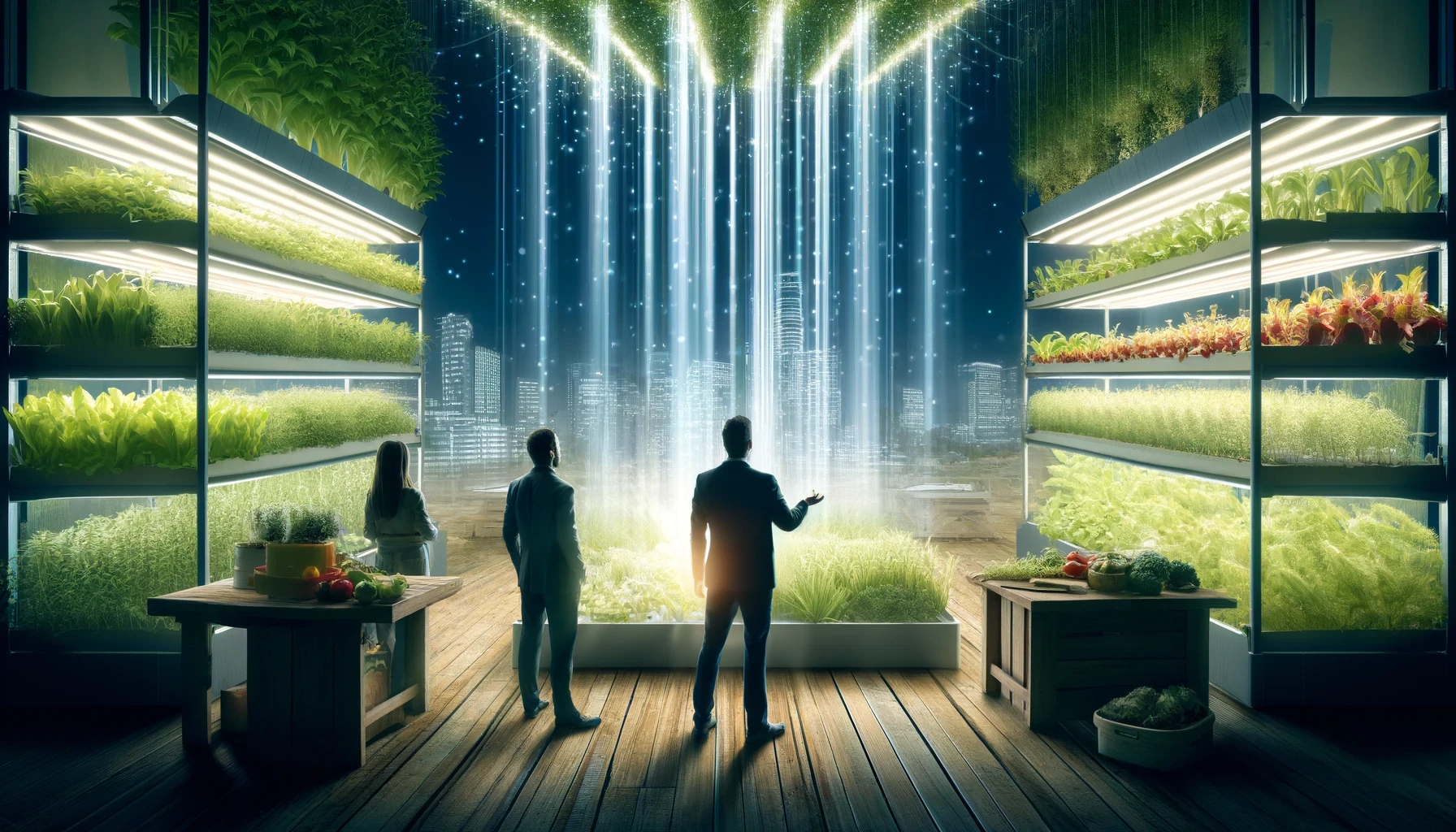Vertical Farming
Revolutionizing Urban Agriculture
Vertical farming offers a cutting-edge solution to the challenges of urban agriculture, combining technology with traditional farming methods to maximize food production in minimal space. This guide will introduce you to the basics of vertical farming, its environmental benefits, and how it’s changing the way cities think about food production.


Your Vertical Farming Guide
Navigating the complexities of vertical farming can be challenging without proper guidance. Our platform offers all the resources you need to start and succeed in your vertical farming venture.
- Expert Guidance on Setup: Step-by-step instructions on building your vertical farm..
- Advanced Agricultural Technologies: Insights into the latest technologies in hydroponics and aeroponics.
- Resource Management Tips: Best practices for water, light, and nutrient management.
- Community Connection: Connect with a network of vertical farmers for support and knowledge exchange.
- Sustainable Practices: Emphasis on environmentally friendly methods.
- Productivity Optimization: Techniques to maximize yield and efficiency.
With our support, you’ll be equipped to tackle vertical farming projects with confidence, ensuring your urban agriculture efforts are both productive and sustainable.
Vertical Farming Success Stories:
Be inspired by successful vertical farming initiatives from around the globe that have positively impacted urban communities.
1. Sky-High Salads: A city skyscraper that produces leafy greens for local restaurants and markets.
2. Community Revival Project: How a vertical farm transformed a neglected urban area into a vibrant community hub.
3. Educational Programs: Schools that integrate vertical farming into their curriculum to teach students about sustainable agriculture.
4. Innovative Partnerships: Collaboration between tech companies and vertical farms to enhance agricultural efficiency.
Each story showcases the transformative potential of vertical farming, providing a glimpse into a future where urban agriculture is not just possible but flourishing.
Start Your Vertical Farming Venture:
Motivate readers to embark on their own vertical farming journey, offering initial steps and encouragement for beginners.
- Choosing the Right Technology: Selecting between hydroponics, aquaponics, or aeroponics.
- Site Selection and Preparation: Tips for choosing the best location and preparing your space.
- Crop Selection: Advice on choosing crops that are suitable for vertical farming.
- Marketing and Sales Strategies: How to market your vertically farmed produce and establish sales channels..
Vertical farming is more than just an agricultural method—it’s a sustainable revolution in food production. With the right approach and resources, you can be at the forefront of this exciting industry.
Frequently Asked Questions (FAQ):
What are the initial costs of starting a vertical farm?
The initial costs of starting a vertical farm can vary widely depending on scale, location, and technology used. Basic small-scale setups can start from a few thousand dollars, mainly covering the costs of hydroponic systems, lighting, and climate control equipment. Larger commercial operations could require significant investment, potentially running into hundreds of thousands of dollars for advanced automation and technology systems.
How does vertical farming save water and energy?
Vertical farming significantly reduces water usage by employing closed systems like hydroponics or aquaponics, which recycle water. These systems use up to 90% less water than traditional soil-based agriculture. Energy efficiency is achieved through the use of LED lighting that precisely caters to the plants’ spectral needs and by situating farms closer to consumers, reducing transportation energy and associated greenhouse gas emissions.
Can vertical farming work in any climate?
Yes, one of the major advantages of vertical farming is its ability to operate independently of external weather conditions, allowing for production in a wide range of climates. By controlling the environment inside the vertical farming structure, crops can be grown year-round, even in places with harsh weather conditions that would not normally support traditional farming.
What are the challenges of vertical farming?
Challenges of vertical farming include high initial setup and operational costs, particularly energy costs associated with artificial lighting and climate control. Technical knowledge required to manage such systems effectively is also significant, as is dealing with potential technological failures. Additionally, there is a limited variety of crops that can be economically grown in vertical farms, primarily leafy greens and herbs.
How can I ensure the quality of produce from my vertical farm?
To ensure the quality of produce from a vertical farm, maintain strict control over the growing environment, including temperature, humidity, CO2 levels, and lighting. Use quality seeds and nutrient solutions, and closely monitor plant health. Implementing integrated pest management strategies can also help maintain high-quality produce without the use of harmful pesticides.